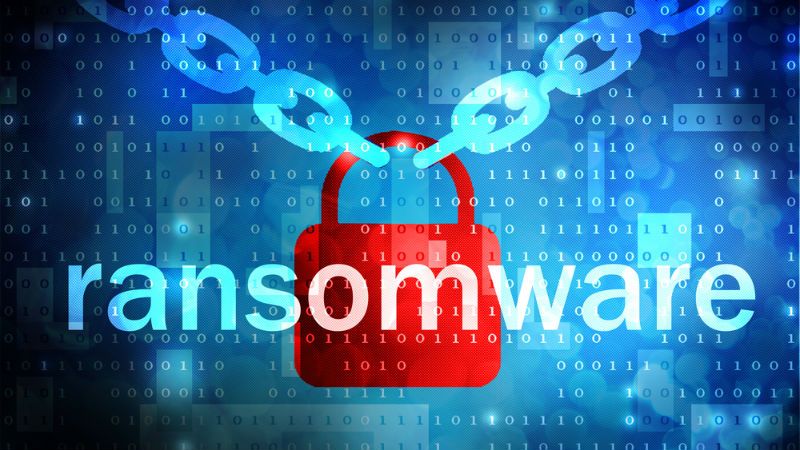যখন Ransomware আপনার সক্রিয় ডিরেক্টরি হাইজ্যাক করে: একটি নির্বাহী গাইড

When hit by ransomware, your instinct is to get systems back online as quickly as possible. But if the attack targets your Active Directory infrastructure, you need to proceed with caution. Rushing into recovery mode without a full view of the impact can reintroduce malware, restore compromised configurations, or cause more damage than the original attack. According to Craig P. K. Birch, Chief Social Link Navigator at Cayosoft, Active Directory (AD) is the bedrock of 90% of large enterprise environments globally. It manages identities, enforces permissions, and acts as the gatekeeper for access.
You might like: When compromised, a powerful business operations resource falls into the hands of attackers who can disable security controls, escalate privileges, and expand their threat posture across the organization. We recently saw evidence of the scale of the threat posed by AD when a widespread zero-day attack against Microsoft SharePoint began. A critical bug in SharePoint saw hackers use it to get onto servers, steal security keys and install hidden backdoors, triggering emergency patches from Microsoft.
This isn’t just a SharePoint issue. It is an insidious identity threat because attackers with initial access to the site could execute code remotely. No user clicks. No elevated rights. Straight to the server.
Sign up for the TechRadar Pro newsletter to get all the top news, opinion, features and guidance your business needs to succeed!
So, what’s next? If SharePoint is integrated with AD or Entra ID (as it often is), Remote Code Execution (RCE) becomes the turning point for infrastructure chaos. Your organization should be prepared to follow up if ransomware compromises your Domain Controller.
First Contain, Then React.
Containment is the first and most important priority. Before attempting recovery, the fastest way to stem further damage is to disable the communications the attackers rely on.
You might like this. This means implementing network-level blocking to immediately limit internal propagation and lateral movement, as well as blocking all outbound traffic to stop communication with command and control servers. Further down the priority list is pausing replication between sites and then disabling automation that could propagate malicious changes.
The attack has landed. Recovering too quickly, especially from unverified backups, could restore the very vulnerabilities that attackers exploited in the first place. The moment you buy yourself now will make all the difference later.
Real Impact
Ransomware operators rarely kick down the door. They log in with legitimate credentials. Phishing, password spraying, and stolen tokens are common entry points. From there, they look for ways to escalate privileges by exploiting weak service accounts, outdated trust paths, or misconfigured permissions.
By the time ransomware hits, they’ve already disabled logging, changed group policies, and installed backdoors in Active Directory.
Clarity is crucial here. Don’t assume what was changed. In AD environments, attackers might:
- Create or modify privileged accounts.
- Change Group Policies to weaken security.
- Modify replication behavior to hide their activity.
- Disable security or settings logging.
Use specialized AD analysis tools to detect changes accurately. Examine what was created, modified, or deleted. If you’re not sure how deep the compromise goes, assume it goes deeper than you think.
Rebuild Trust, Not Just Systems.
If Active Directory is rebuilt using compromised backups or without verifying core services, the environment remains unstable and vulnerable. The best approach is to have an isolated backup recovery environment ready to go for just such times. Active Directory recovery isn’t instantaneous. However, if it is not something you already have, then you’ll need to stand one up in an isolated recovery environment.
Backups need to be carefully tested to ensure they were created before the attack. Validate schema integrity, replication functionality, and policy consistency before reconnecting. Recovering Active Directory isn’t just a technical milestone, it’s a restoration of trust. If users and systems can’t rely on AD for secure authentication, business operations will remain disrupted no matter how quickly services are brought back online.
To reduce complexity and risk, many organizations rely on solutions specifically designed for rapid, clean AD forest recovery, such as those offered by vendors like Cayosoft. These tools are designed to eliminate guesswork, enforce best practices, and accelerate secure re-integration.
The goal isn’t speed for its own sake, but confidence that what you’re restoring is clean, stable, and trustworthy.
Strengthening the Core
A ransomware incident should prompt a complete overhaul of AD. Prevention is only effective if the environment is properly secured. Here’s how to mitigate risk:
- Use least privilege: No one gets more access than they need. Not users, not services, not even administrators.
- Clean up old accounts: Disable or delete inactive users and machines. Change your service account credentials.
- Review your groups: Examine high-privilege memberships and revoke unnecessary access.
- Use tiered administrative structure: Separate routine tasks from high-risk changes.
- Enable Multi-Factor Authentication (MFA) (across the board, especially for anything touching identity infrastructure.
In parallel, improve visibility as a standard – Event logging is rarely enough. Look for tools that detect subtle privilege escalations, unauthorized replication, and anomalous login patterns that maintenance people need to be able to do. They practice regular compromise-promised recovery from the last line of defense.
Every incident has a point where someone says, “We have a plan, right?” And too often the answer is: “We thought we did.” Too often, organizations assume that recovery will work, only to discover that processes break down under pressure.
It’s essential that everyone’s backups are immutable, encrypted, and subject to daily inspection and scanning for malware. Don’t forget to regularly test recovery, simulate rebuilding domain controllers, verify that backups are not only complete but recoverable, and train teams to complete the process under time pressure.
Recovery must occur in a clean, isolated environment to prevent re-infection or reintroduction of compromised system state data. And it’s crucial that every recovery step is documented, tested, and repeatable. When AD is involved, recovery can’t just be a technical exercise. It must be a coordinated effort that requires clear leadership, cross-functional alignment, and discipline.
Create a zero trust culture, not just structure.
Once recovery is complete, the work shifts to creating a more resilient environment. Make Zero Trust a baseline and stick to the principles of continuous identity verification, limited access by default, and monitoring that never stops at the perimeter.
You also need to start questioning long-held assumptions about who and what should have access to critical systems. You can support these efforts through Red Teaming, which simulates attack policies and tools to identify your blind spots. These exercises often expose configuration drift, MFA exceptions, or stale accounts that might otherwise go undetected.
A recovery plan that hasn’t been tested is a liability. A Zero Trust model that has yet to be implemented is a victim waiting to happen.
Recovery starts before the attack.
Ransomware is a stress test of your operations, leadership, and your organization’s ability to function in a fire. When AD goes down, so does your coordination, ability to communicate, and access control. Effective recovery starts long before the attack. It all starts with knowing your weak spots, keeping your perimeter short and visible, and testing response under controlled conditions. It starts with having a plan.
The most resilient teams contain quickly, verify, rebuild with precision, and continuously evolve. Ransomware shouldn’t define your future. It can be a catalyst for building resilience and reclaiming control.
We’ve presented the best encryption software.
This article has been prepared as part of the company’s expert insights channel TechRadarPro, where we profile the best and brightest minds in today’s technology industry. The opinions expressed here are the author’s and not necessarily those of TechRadarPro or Future plc.
If you are interested in participating, learn more here: https://www.techradar.com/news/submit-your-story-to-techradar-pro
প্রকাশিত: 2025-10-21 20:04:00
উৎস: www.techradar.com











